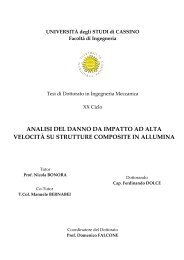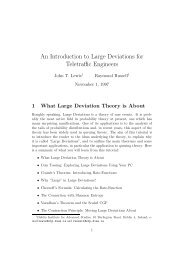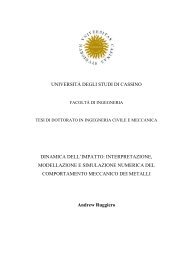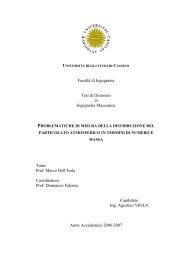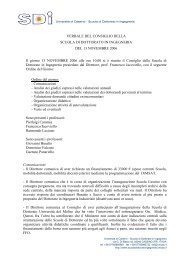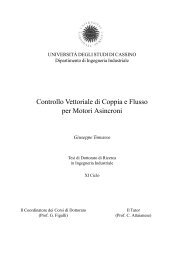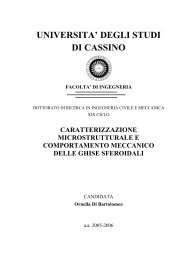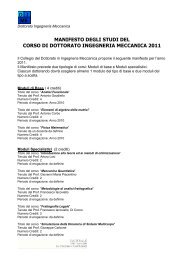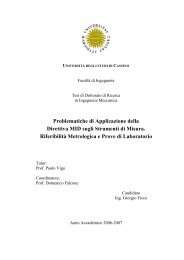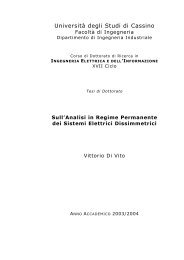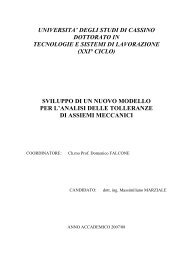Finite Strain Shape Memory Alloys Modeling - Scuola di Dottorato in ...
Finite Strain Shape Memory Alloys Modeling - Scuola di Dottorato in ...
Finite Strain Shape Memory Alloys Modeling - Scuola di Dottorato in ...
Create successful ePaper yourself
Turn your PDF publications into a flip-book with our unique Google optimized e-Paper software.
Accor<strong>di</strong>ngly, the tensor α plays a role similar to the back-stress of the classicalplasticity and X is the relative stress.Introduc<strong>in</strong>g a yield function that is assumed to depend on the deviatoric part of thedevthermodynamic force f ( X ), the equation describ<strong>in</strong>g the associative normalityrule for the <strong>in</strong>ternal variable εtis given by:devdev∂f( X ) dev ∂f( X )ε t= ζ = ζI (6.32)dev∂X∂Xwith ζ the so-called plastic multiplier and ( dev = − 1)( : )X X X 1 1. From the3analysis of the flow rule form (6.28) it can be po<strong>in</strong>ted out that the transformationstra<strong>in</strong> tensor ε tis a deviatoric tensor. This fact appears <strong>in</strong> a perfect agreement withthe experimental evidences <strong>in</strong><strong>di</strong>cat<strong>in</strong>g no volume variations dur<strong>in</strong>g the phasetransition.Furhermore, between tension and compression pseudoelastic experiments, anasymmetric behavior is observed. In particular, at a given test temperature it is foundthat: (i) the stress level required to nucleate the martensitic phase from the austeniticphase is considerably higher <strong>in</strong> compression than <strong>in</strong> tension; (ii) the transformationstra<strong>in</strong> measured <strong>in</strong> compression is smaller than that <strong>in</strong> tension; (iii) the hysteresisloop generated <strong>in</strong> compression is wider (along the stress axis) than the hysteresisloop generated <strong>in</strong> tension. These major <strong>di</strong>fferences between the tension andcompression response of a Ni-Ti alloy <strong>in</strong> pseudoelastic experiments are shown <strong>in</strong>Fig. 6.1.To catch the asymmetric behavior of SMA dur<strong>in</strong>g tension-compression tests, theactivation of the phase transition, i.e. the evolution of the <strong>in</strong>elastic stra<strong>in</strong> ε t, is102



